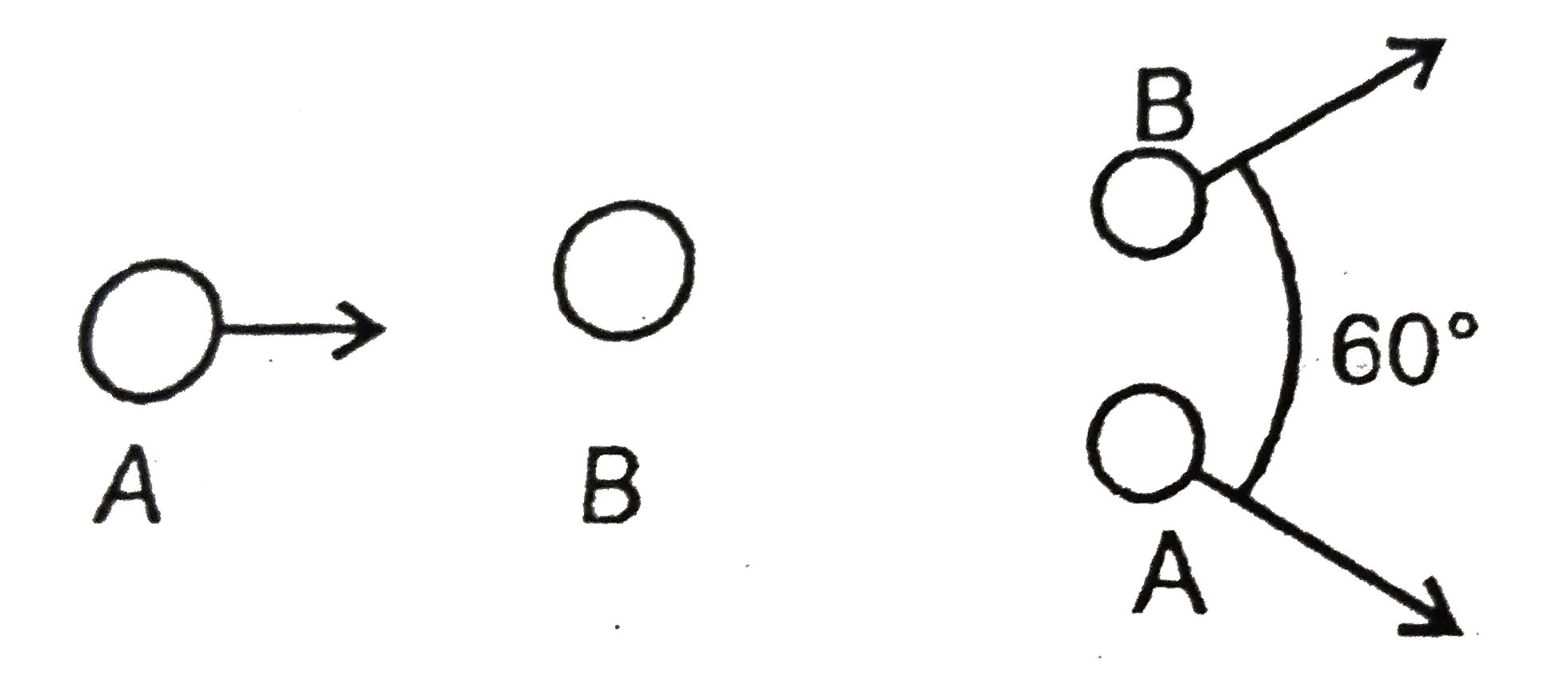After a totally inelastic collision, two objects of the same mass and same initial speeds are found to move together at half of their initial speeds. The angle between the initial velocities of the objects is
To solve the problem, we will use the principle of conservation of momentum. Here’s a step-by-step solution:
Step 1: Understand the scenario
We have two objects A and B, both of the same mass m and moving with the same initial speed v. After a totally inelastic collision, they move together with a speed of v2. We need to find the angle θ between their initial velocities.
Step 2: Set up the initial conditions
Let:
- Object A is moving with velocity v.
- Object B is moving with velocity v at an angle θ to A.
Step 3: Resolve the initial velocities into components
For object A:
- Horizontal component: vcos(0)=v
- Vertical component: vsin(0)=0
For object B (making an angle θ with A):
- Horizontal component: vcos(θ)
- Vertical component: vsin(θ)
Step 4: Apply conservation of momentum
Since momentum is conserved, we can write the equations for the x and y components of momentum before and after the collision.
In the x-direction:
mv+mvcos(θ)=(2m)(v2)
Simplifying this gives:
mv(1+cos(θ))=mv
Dividing through by mv (assuming v≠0):
1+cos(θ)=1
Thus:
cos(θ)=0
In the y-direction:
0+mvsin(θ)=0
This implies:
sin(θ)=0
Step 5: Solve for θ
From the equations above, we find:
- cos(θ)=0 implies θ=90∘ or θ=270∘.
- sin(θ)=0 implies θ=0∘ or θ=180∘.
However, since we are looking for the angle between the two initial velocities, we consider the case where θ is the angle between the two directions of motion before the collision.
Step 6: Conclusion
The angle θ between the initial velocities of the two objects is 120∘.
We have two objects A and B, both of the same mass m and moving with the same initial speed v. After a totally inelastic collision, they move together with a speed of v2. We need to find the angle θ between their initial velocities.
Let:
- Object A is moving with velocity v.
- Object B is moving with velocity v at an angle θ to A.
For object A:
- Horizontal component: vcos(0)=v
- Vertical component: vsin(0)=0
- Horizontal component: vcos(θ)
- Vertical component: vsin(θ)
Since momentum is conserved, we can write the equations for the x and y components of momentum before and after the collision.
mv+mvcos(θ)=(2m)(v2)
Simplifying this gives:
mv(1+cos(θ))=mv
Dividing through by mv (assuming v≠0):
1+cos(θ)=1
Thus:
cos(θ)=0
0+mvsin(θ)=0
This implies:
sin(θ)=0
From the equations above, we find:
- cos(θ)=0 implies θ=90∘ or θ=270∘.
- sin(θ)=0 implies θ=0∘ or θ=180∘.
The angle θ between the initial velocities of the two objects is 120∘.
Topper's Solved these Questions
Similar Questions
After a completely inelastic collision two objects of the same mass and same initial speed are found to move away together at half their initial speed. Find the angle between the initial velocities of the objects.
View SolutionAfter perfectly inelastic collision between two identical balls moving with same speed in different directions, the speed of the combined mass becomes half the initial speed. Find the angle between the two before collision.
View SolutionThe speed of a projectile at its maximum height is half of its initial speed. The angle of projection is .
View SolutionTwo particles of equal masses moving with same momentum collide perfectly inelastically. After the collision the combined mass moves with half of the speed of the individual masses. The angle between the initial momenta of individual particle is
View SolutionTwo stones are projected simultaneously from a tower a differenct angles of projection with same speed 'u'. The distance between two stones is increasing at constant rate 'u'. Then the angle between the initial velocity vectors of the two stones is :
View SolutionConsider the elastic collision f two bodies A and B of equal mass. Initially B is at rest and A moves with velocity v. After the collision -
View SolutionA particle of mass m is projected from the ground with an initial speed u0 at an angle α with the horizontal. At the highest point of its trajectory, it makes a completely inelastic collision with another identical particle, which was thrown vertically upward from the ground with the same initial speed u0. The angle that the composite system makes with the horizontal immediately after the collision is
View SolutionTwo projectiles thrown from the same point at angles 60∘and30∘ with the horizontal attain the same height. The ratio of their initial velocities is
View SolutionConsider an oblique elastic collision between a moving ball and a stationary ball of the same mass. Both the balls move with the same speed after the collision. After the collision, the angle between the directions of motion of two balls is x degree. Find the value of x.
View SolutionA smooth ball 'A' moving with velocity 'V' collides with another smooth identical ball at rest. After collision both the balls move with same speed with angle between their velocities 60∘. No external force acts on the system of balls.

The speed of each ball after the collision is
View Solution
